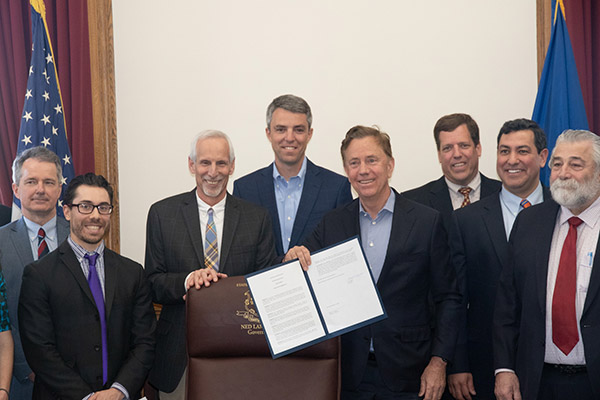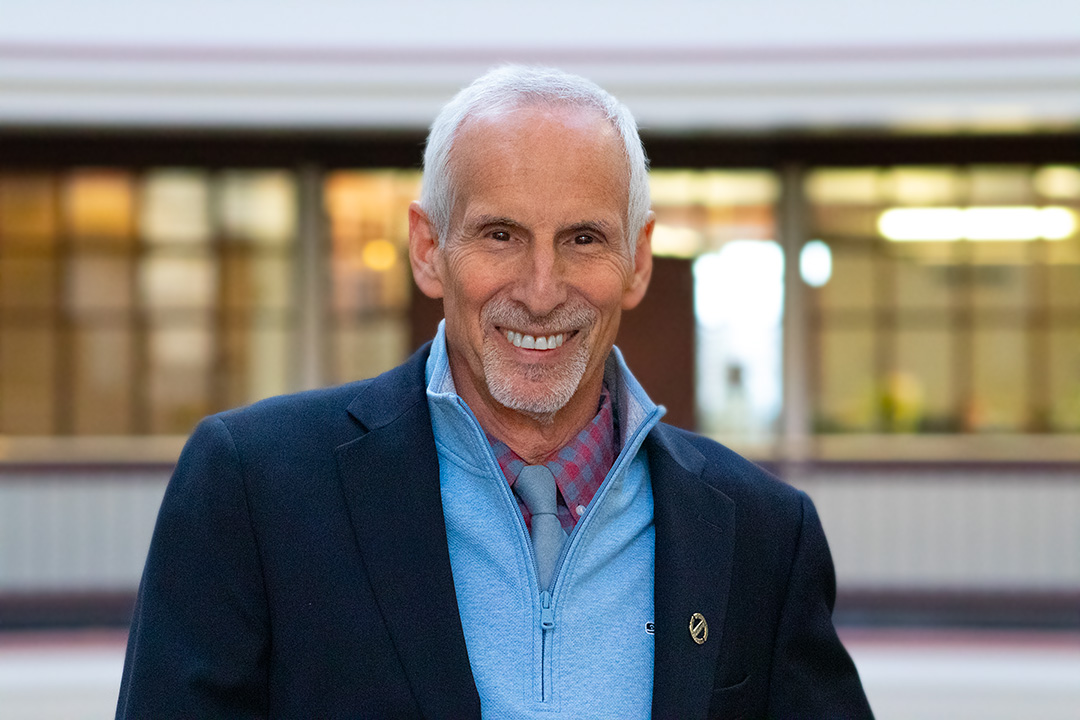Senator Needleman Lauds Governor Lamont’s First Executive Order Strengthening Energy Savings Projects

State Sen. Norm Needleman, hand on chair, stands with a coalition of lawmakers and energy leaders as Governor Ned Lamont signed his first executive order Wednesday in the State Capitol.
HARTFORD, CT – Today, State Senator Norm Needleman (D-Essex) joined a coalition of legislative and business leaders as Governor Ned Lamont signed his first executive order. Members of the Energy & Technology Committee and energy leaders gathered in Governor Lamont’s office as he signed an order strengthening Connecticut’s Lead by Example program.
“As chair of the Energy & Technology Committee, I applaud Gov. Lamont’s work in strengthening our state’s environmental and energy sustainability while simultaneously infusing new opportunities to find cost savings through more efficient practices,” said Sen. Needleman. “The Lead by Example program stands to support our state and save millions of dollars in coming years through increased use of energy-efficient, environmentally conscious products. It has already saved state agencies more than $6 million annually since 2012. Governor Lamont’s order today will help that number grow.”
“Sustainability is good for our planet, and good for taxpayers, too,” Governor Lamont said. “As a major consumer of energy with more than 3,000 structures and 3,500 vehicles in our fleet, we can lower the state’s operating costs, support investment in sustainable businesses, and safeguard our environment. Working together across agencies, we are improving the performance and efficiency of state government, starting with our environmental and carbon footprint.”
Gov. Lamont’s executive order directs the Office of Policy and Management, the Department of Administrative Services and the Department of Energy and Environmental Protection to work together on an interagency committee setting goals for agencies regarding onsite heating and cooling, electricity, clean energy, vehicle fleets, waste management and water use, among others. This work is prioritized to not require bonding and to seek a target of zero net emissions by 2050.
This expansion of Lead by Example will help meet state overall goals of reducing greenhouse gas emissions by 45 percent, waste disposal by 25 percent and water consumption by 10 percent by 2030.
Share this page:
